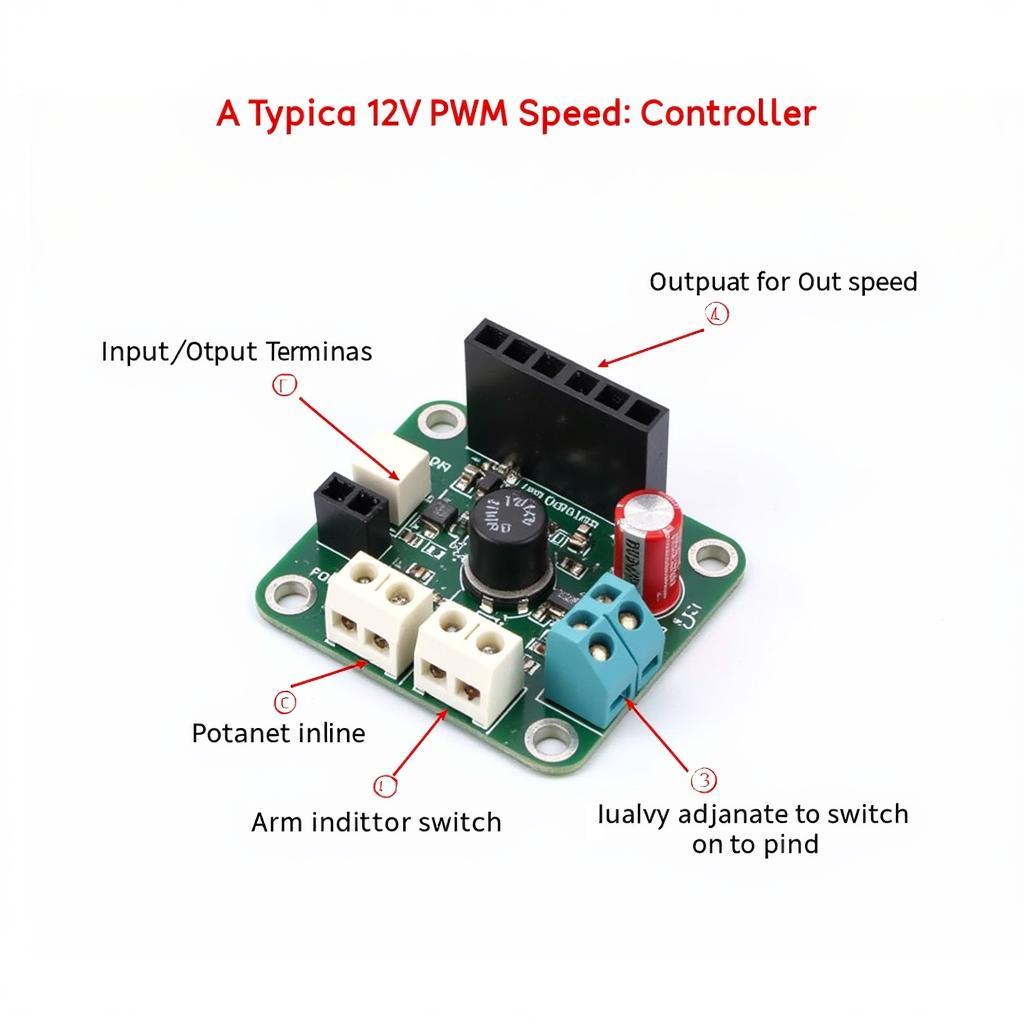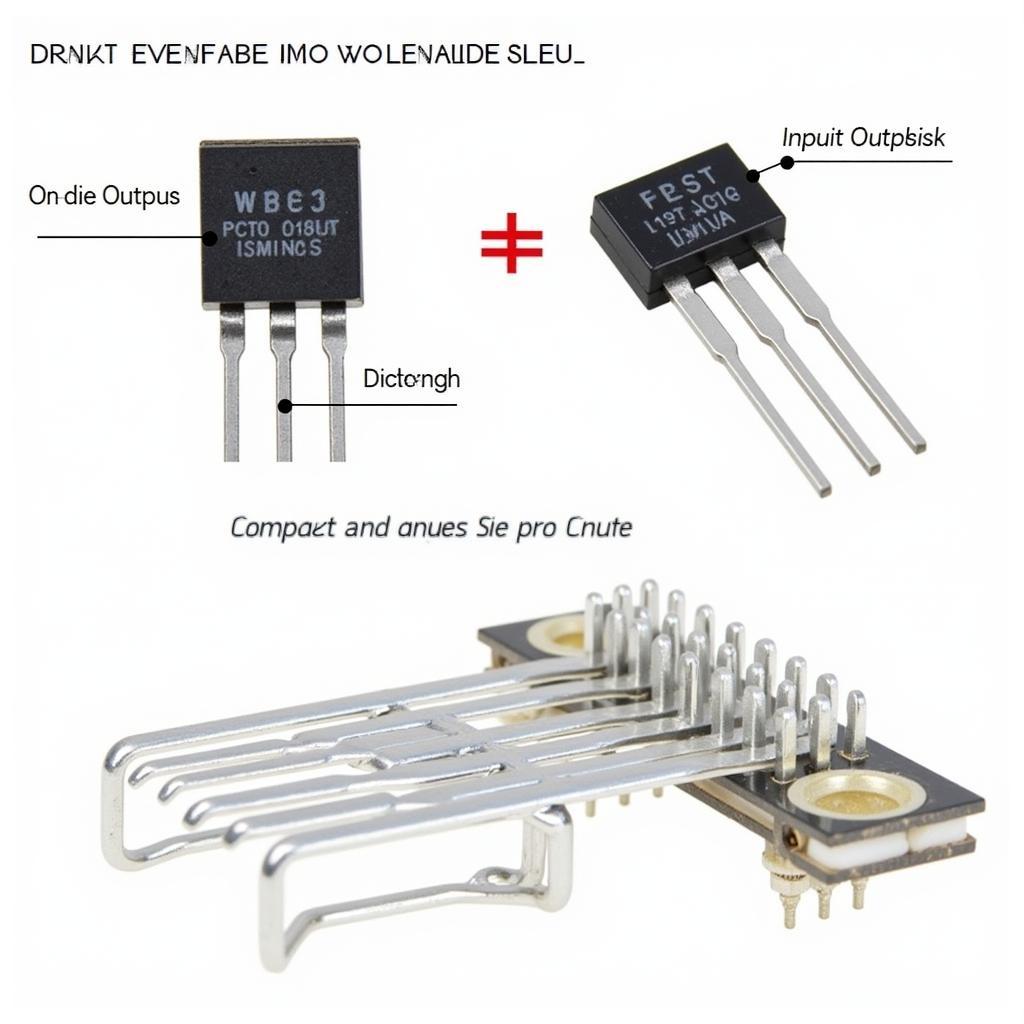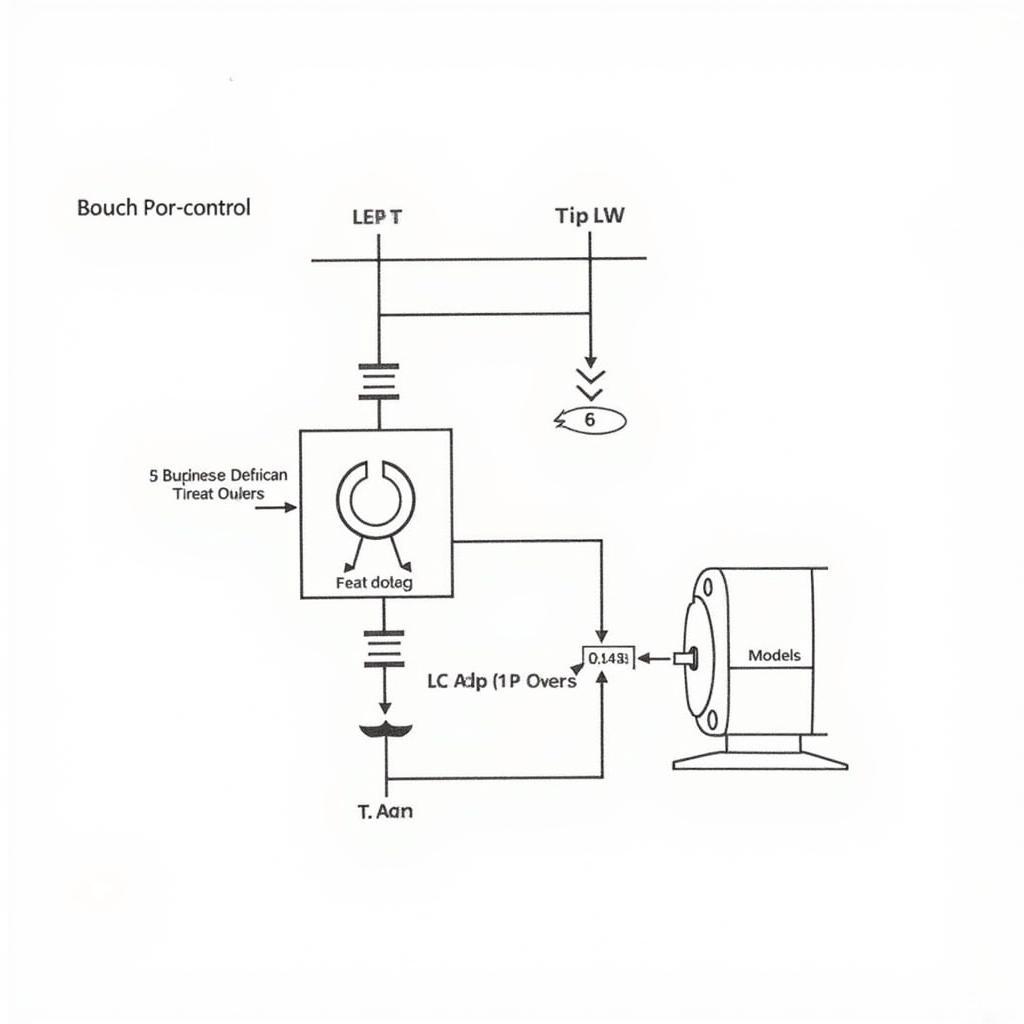A 12 Volt Speed Control Switch offers a simple and effective way to regulate the speed of a 12V DC motor. From adjusting the intensity of a cooling fan to fine-tuning the movement of a motorized device, these switches provide a valuable level of control. This article dives deep into the world of 12 volt speed control switches, exploring their types, applications, and how to choose the right one for your needs.
Types of 12 Volt Speed Control Switches
Several types of 12 volt speed control switches are available, each employing a different mechanism to regulate speed. Understanding these differences will help you make the best choice.
Pulse Width Modulation (PWM) Speed Controllers
PWM controllers are a popular choice for their efficiency and precise control. They work by rapidly switching the power on and off, effectively varying the average voltage supplied to the motor. The “duty cycle” – the percentage of time the power is on – determines the motor speed. Higher duty cycles mean higher speeds. PWM controllers are known for minimizing heat generation and extending motor lifespan.
Linear Voltage Regulators
Linear regulators operate by dissipating excess voltage as heat. They are simpler than PWM controllers but less efficient. While suitable for smaller motors and applications where heat isn’t a significant concern, they may not be ideal for larger motors or continuous operation.
Rotary Speed Controllers
These offer a user-friendly interface with a simple knob to adjust the speed. They can utilize either PWM or linear regulation internally. Their intuitive design makes them a popular choice for applications requiring frequent speed adjustments.
 12V PWM Speed Controller Example
12V PWM Speed Controller Example
Choosing the Right 12 Volt Speed Control Switch
Selecting the correct 12 volt speed control switch involves considering factors such as motor size, application, and desired control level. Here’s a breakdown:
Motor Current Requirements
The switch must handle the motor’s maximum current draw. Check the motor’s specifications and choose a switch with a higher current rating to prevent overloading.
Control Precision
PWM controllers offer finer control than linear regulators, allowing for precise speed adjustments. If your application requires precise speed control, PWM is the preferred option.
Environmental Factors
Consider the operating environment. If the switch will be exposed to high temperatures or moisture, ensure it has adequate protection.
 12V Linear Voltage Regulator Example
12V Linear Voltage Regulator Example
Applications of 12 Volt Speed Control Switches
12 volt speed control switches find widespread use in various applications:
- Cooling Fans: Adjusting fan speed based on temperature needs.
- Robotics: Precisely controlling the movement of motors in robotic arms or vehicles.
- Automotive Applications: Regulating the speed of 12V accessories like interior lights or windshield wipers.
- DIY Projects: Offering versatile control for various hobby projects involving 12V motors.
Installing a 12 Volt Speed Control Switch
Installing a 12 volt speed control switch is typically straightforward. Most switches have clearly marked input and output terminals. Connect the input to the 12V power source and the output to the motor. Always follow the manufacturer’s instructions for specific wiring diagrams and safety precautions.
“Choosing the right speed control switch is crucial for optimal motor performance and longevity,” says John Smith, Senior Electrical Engineer at ElectroTech Solutions. “Understanding the specific requirements of your application will guide you towards the most suitable solution.”
 Wiring Diagram for a 12V Speed Control Switch
Wiring Diagram for a 12V Speed Control Switch
“Remember to always check the current rating of both the motor and the switch to prevent potential damage,” adds Sarah Johnson, Lead Technician at MotorControl Inc. “Overloading a switch can lead to overheating and failure.”
Conclusion
A 12 volt speed control switch is an essential component for anyone working with 12V DC motors. By understanding the various types, applications, and selection criteria, you can effectively control the speed of your motors and optimize their performance. Selecting the correct switch ensures smooth operation and extends the lifespan of your motor.
FAQ
- What is the difference between PWM and linear speed control?
- How do I determine the correct current rating for my speed controller?
- Can I use a 12V speed controller with a higher voltage motor?
- What are the common causes of speed controller failure?
- How can I troubleshoot a malfunctioning speed controller?
- What safety precautions should I take when installing a speed control switch?
- Are there waterproof 12 volt speed control switches available?
Need More Help?
For further assistance with 12 volt speed control switches and other related products, please contact us:
Phone Number: 0902476650
Email: [email protected]
Address: 139 Đ. Võ Văn Kiệt, Hoà Long, Bà Rịa, Bà Rịa – Vũng Tàu, Việt Nam
We have a 24/7 customer support team available to assist you.





